Big ship cruises have a business class section and by almost every comparable metric it’s even better than business class for airlines.
If you are considering booking travel or signing up for a new credit card please click here. Both support LiveAndLetsFly.com.
If you haven’t followed us on Facebook or Instagram, add us today.
Business Class For Cruises? Ship Within A Ship
One of the reasons why readers of this site and travelers like me don’t often cruise, especially on large mega-ships, is the same reason we don’t fly coach. Yes, we love to travel – but comfortably. A crowded middle seat on a 10-hour flight is not something that many readers of this site would take even if given for free. Maybe that makes us snobs, maybe it just means we know what we want and what we don’t.
Here are the top reasons why premium travelers don’t cruise:
- Crowded spaces, pools
- Poor quality food
- Lack of refinement
- A feeling of being part of a mass of people
Something that looks and feels like this:
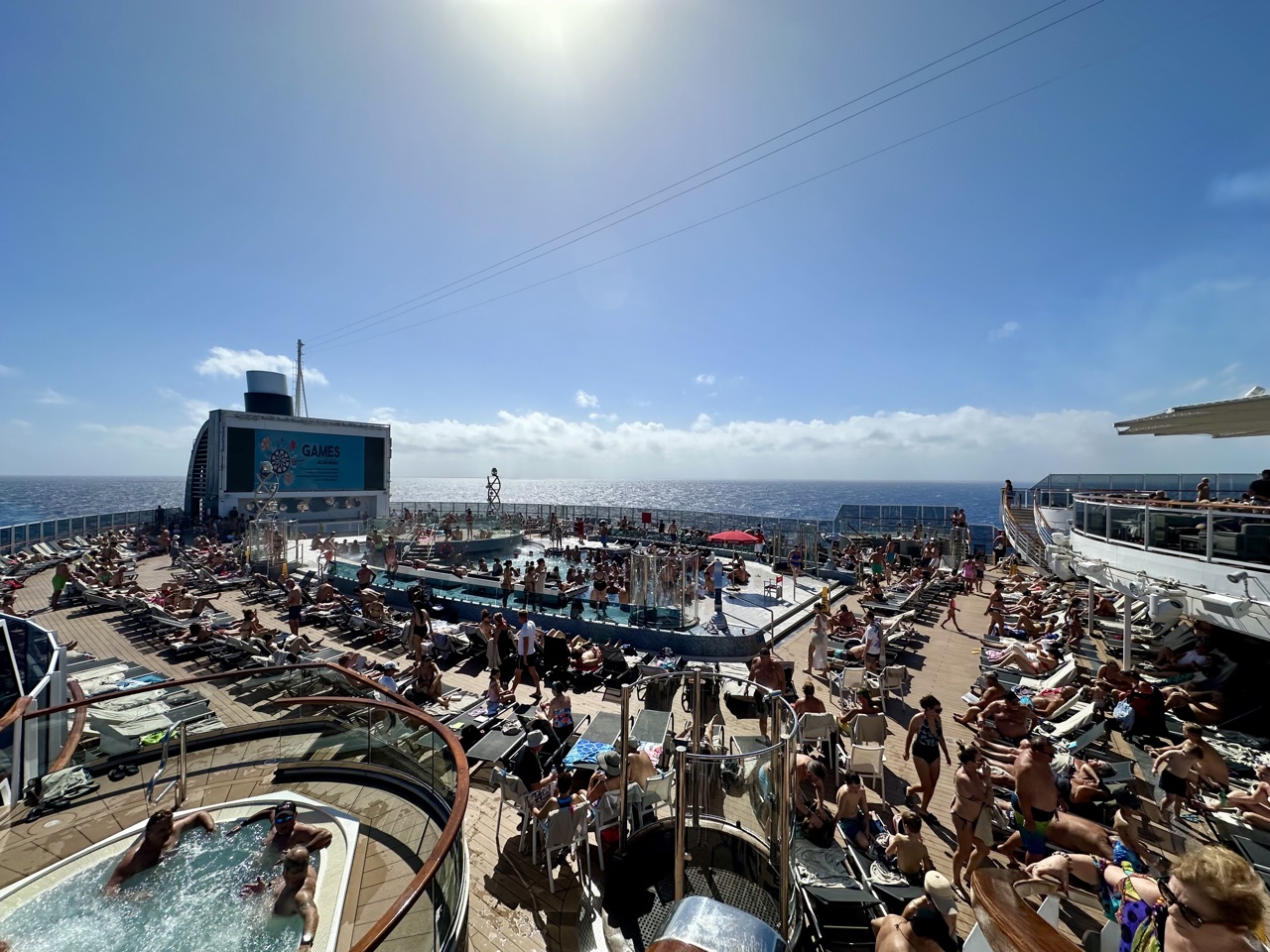
Those reasons are valid, and they aren’t that dissimilar from flying coach. But like flying, there is a business class version of cruising and while each brand has its own specific name for this level of service (Yacht Club, The Retreat, Haven – like Polaris, Flagship, DeltaOne) generally it’s referred to as “Ship Within A Ship.”
Just like business class for flying, the premium cruising experience has many of the same features as flying in premium cabins plus a few more.
From private check-ins, to restricted access lounges, premium food, and more – ship within a ship takes the problematic areas of cruising away while leaving the benefits to enjoy.
Check In
One of the single greatest examples of the mass transit that is flying coach is found in Miami at the American Airlines check-in counter. Retractable ropes on three-foot poles snake passengers and their luggage around like theme park rides. Business class flyers enjoy a separate area with a better agent to passenger ratio and those representatives are more qualified. Specialty tags highlight that these passengers have more important luggage with bright colored tags easily identifiable by baggage handlers. For first class passengers, a private area with a bellhop is waiting to check passengers in from a more comfortable environment.
Both sides of that reality exist in cruising too. A mass of people arrive at the port and snake through the large terminal buildings before entering a security check point and then a waiting area to board.
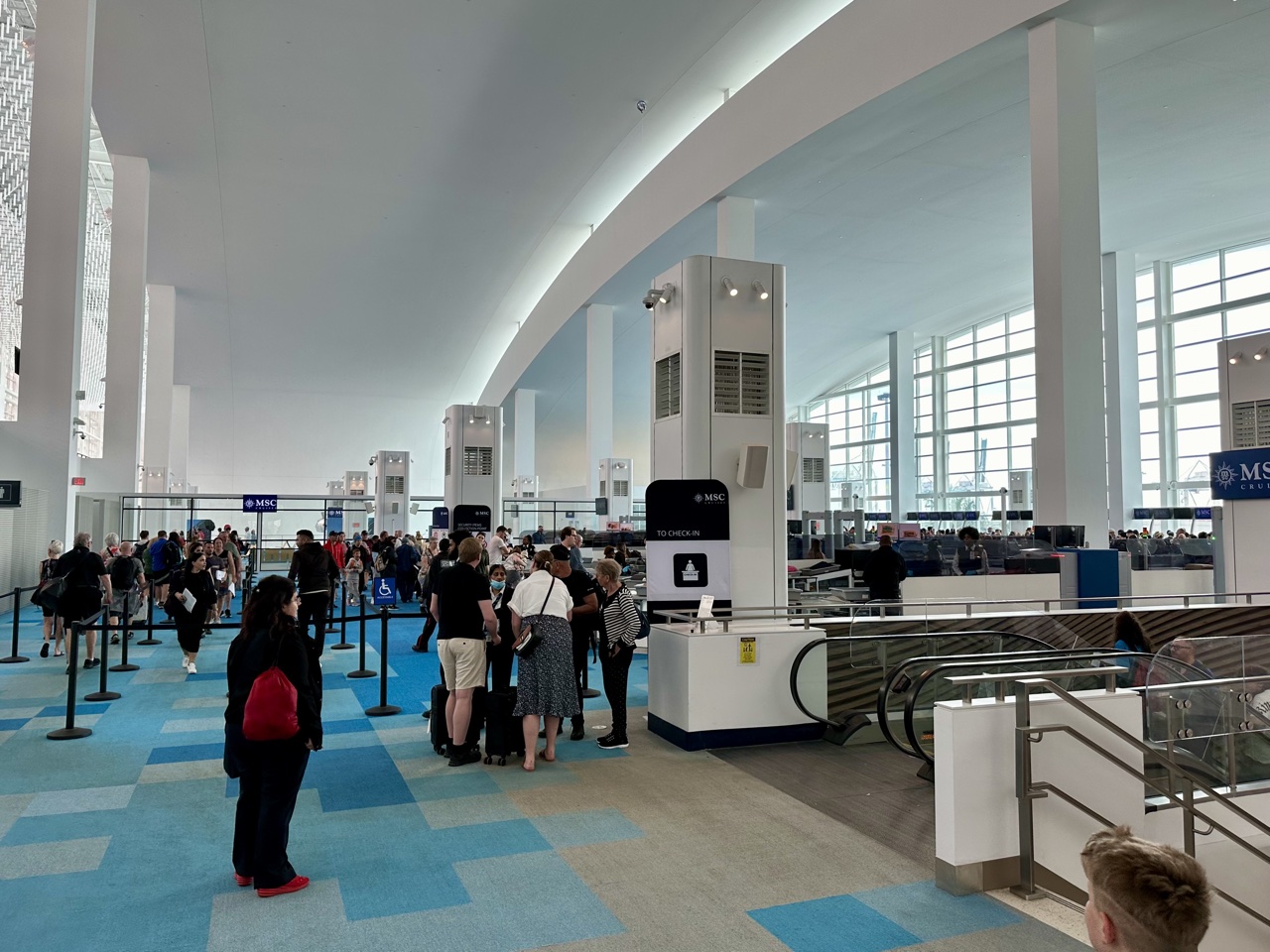
But for Ship Within A Ship passengers, we find a private check-in area, personally guided to security where there’s no line, plenty of reception agents to assist and a lounge for those who arrive too early to board the ship.
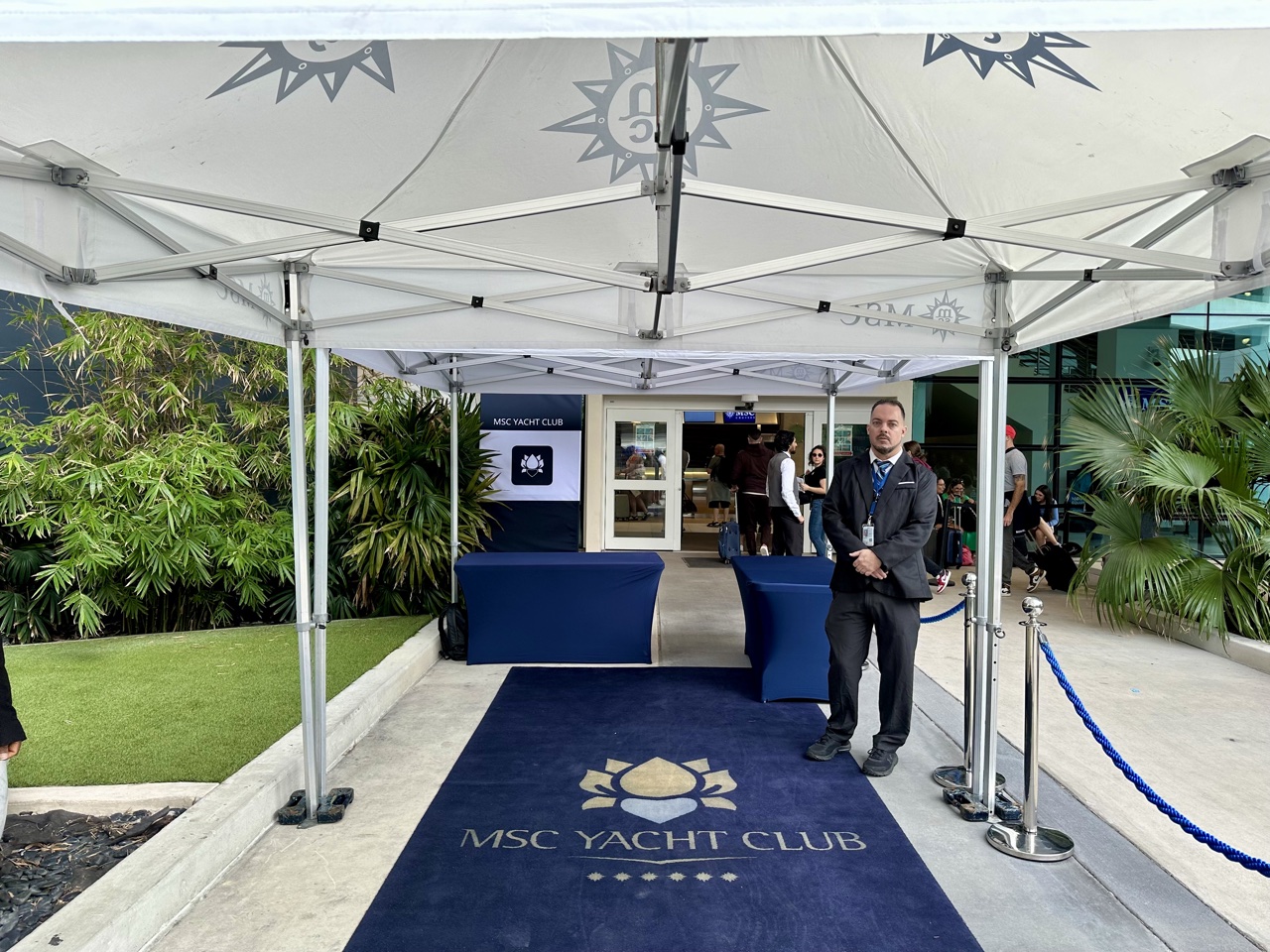
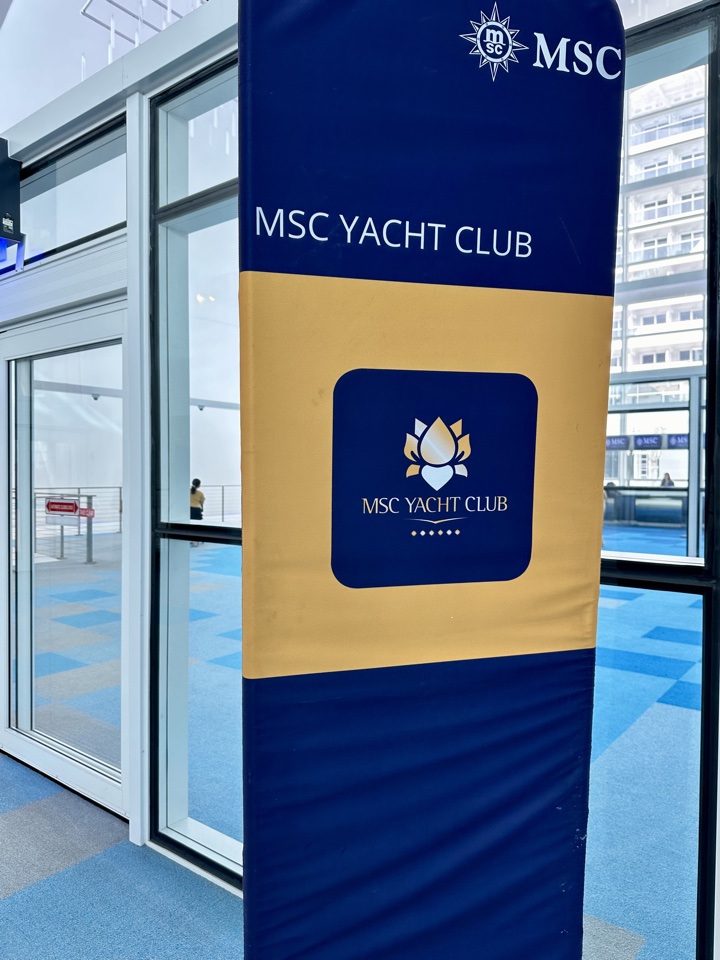
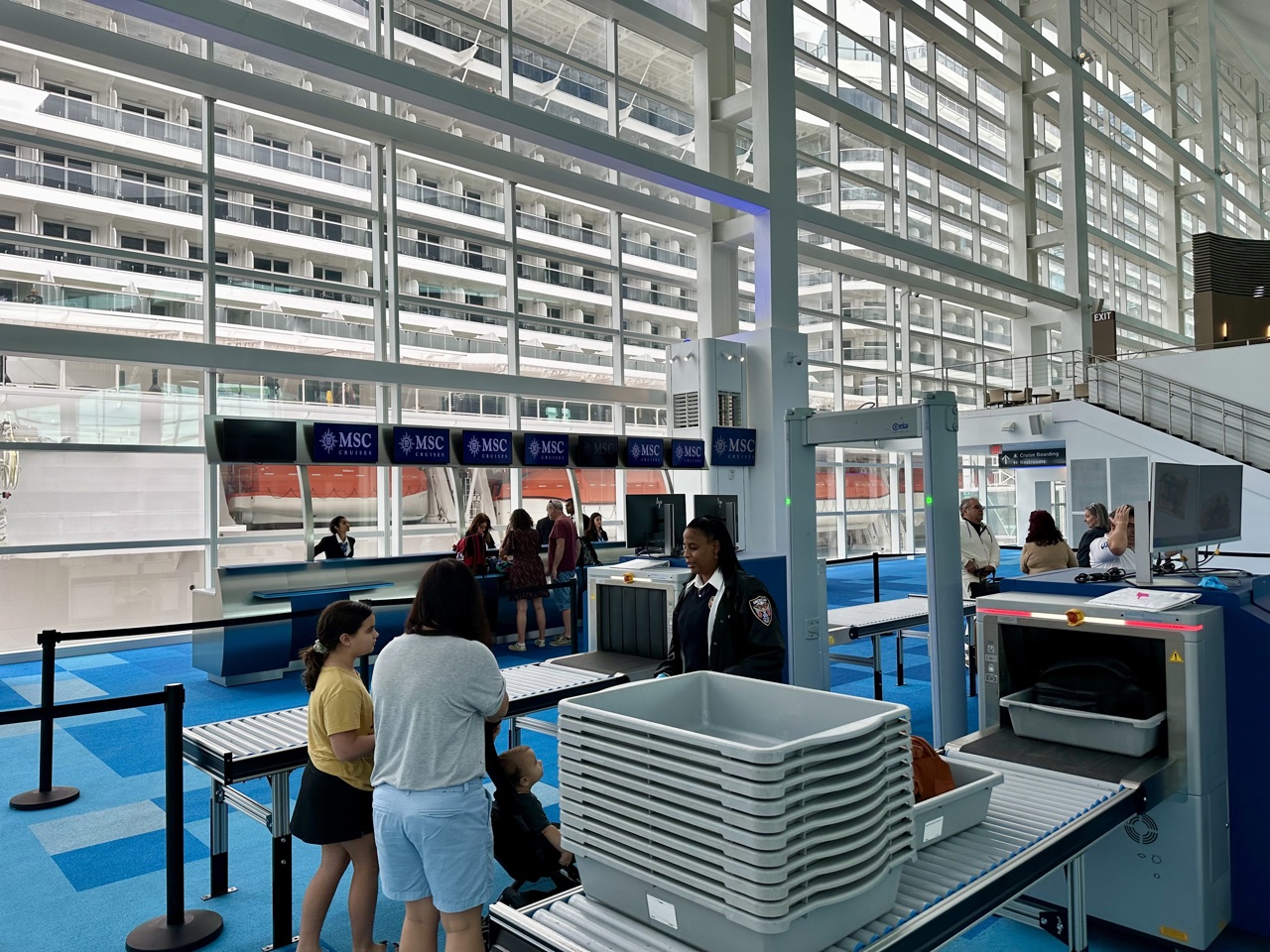
Quite the contrast.
Some Ship Within A Ship passengers even have an included airport transfer via a black car.
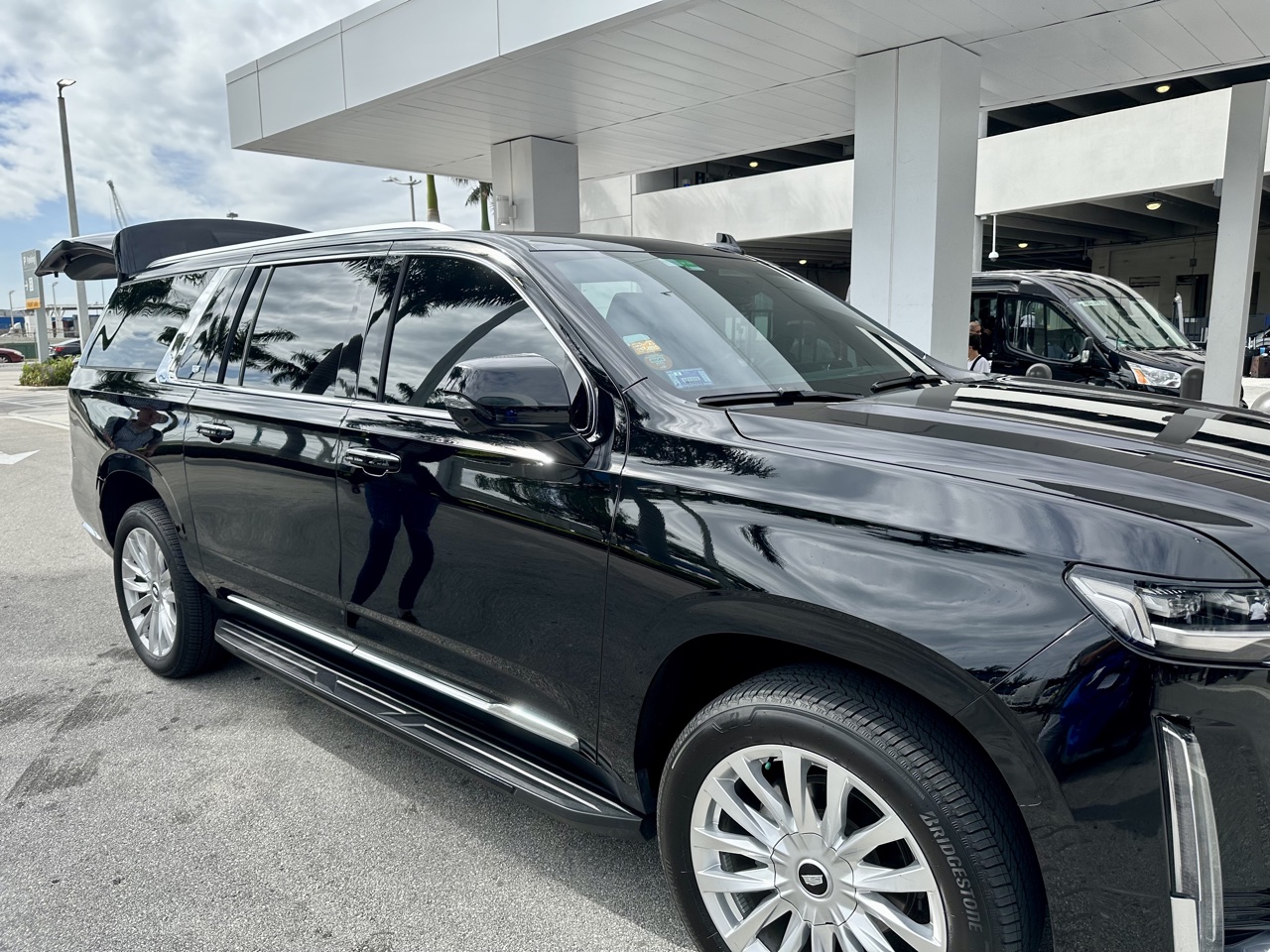
Suite
Ship within a ship suites tend to be nicer, larger, and in an advantageous location on the ship, usually at the front. These guests are permitted to board earlier than the rest of the ship too. Just like on an airplane, the coach restrooms might be the cramped half bathrooms of the 737 MAX series, and just generally less spacious with fewer amenities. In the forward cabins, we see flower pots with fresh orchids inside, an array of amenities, and generally more space – in fact, on ANA I recall electric bidets in business class restrooms.
Most recall the cruise bathrooms that are quarter circular designs and the room is very tight even for fit adults. Bathrooms and room space generally in ship within a ship berths are larger and more modern. They might include a shower with a bench, a double vanity, and lots of storage, only half the shower is visible in the shot below for example.
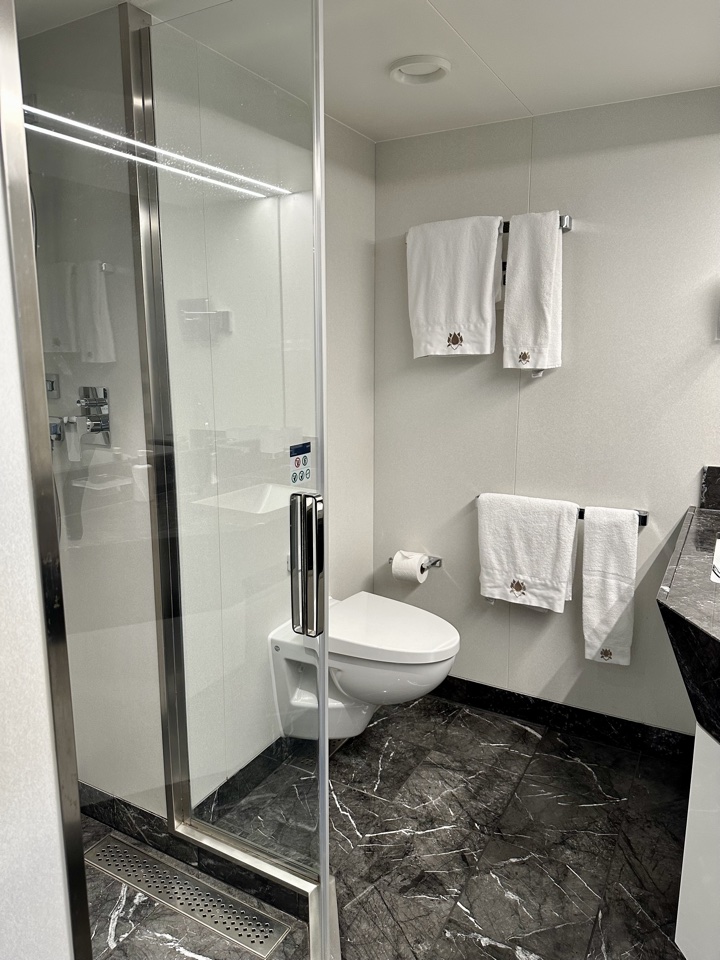
Most feature all-balcony suites in ship within a ship concepts and they are larger, wider, and offer a higher-level finish. Here’s one from MSC Yacht Club:
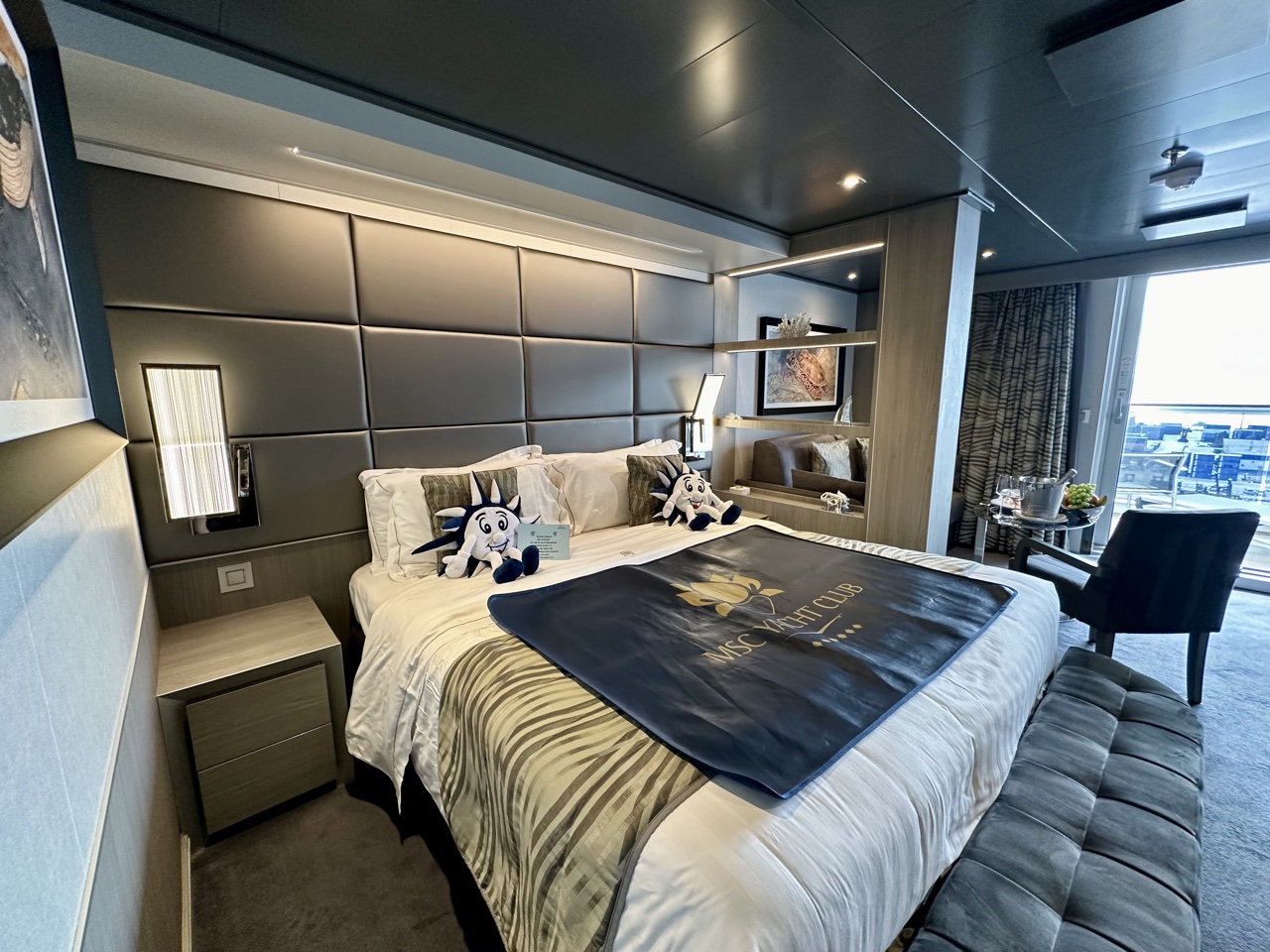
Much like checking in as an elite to a hotel chain, a welcome gift awaits ship within ship guests too. Personalized touches are details that that business class gets right and so does this model onboard a ship, in this case making our daughter Lucy feel individually valued.
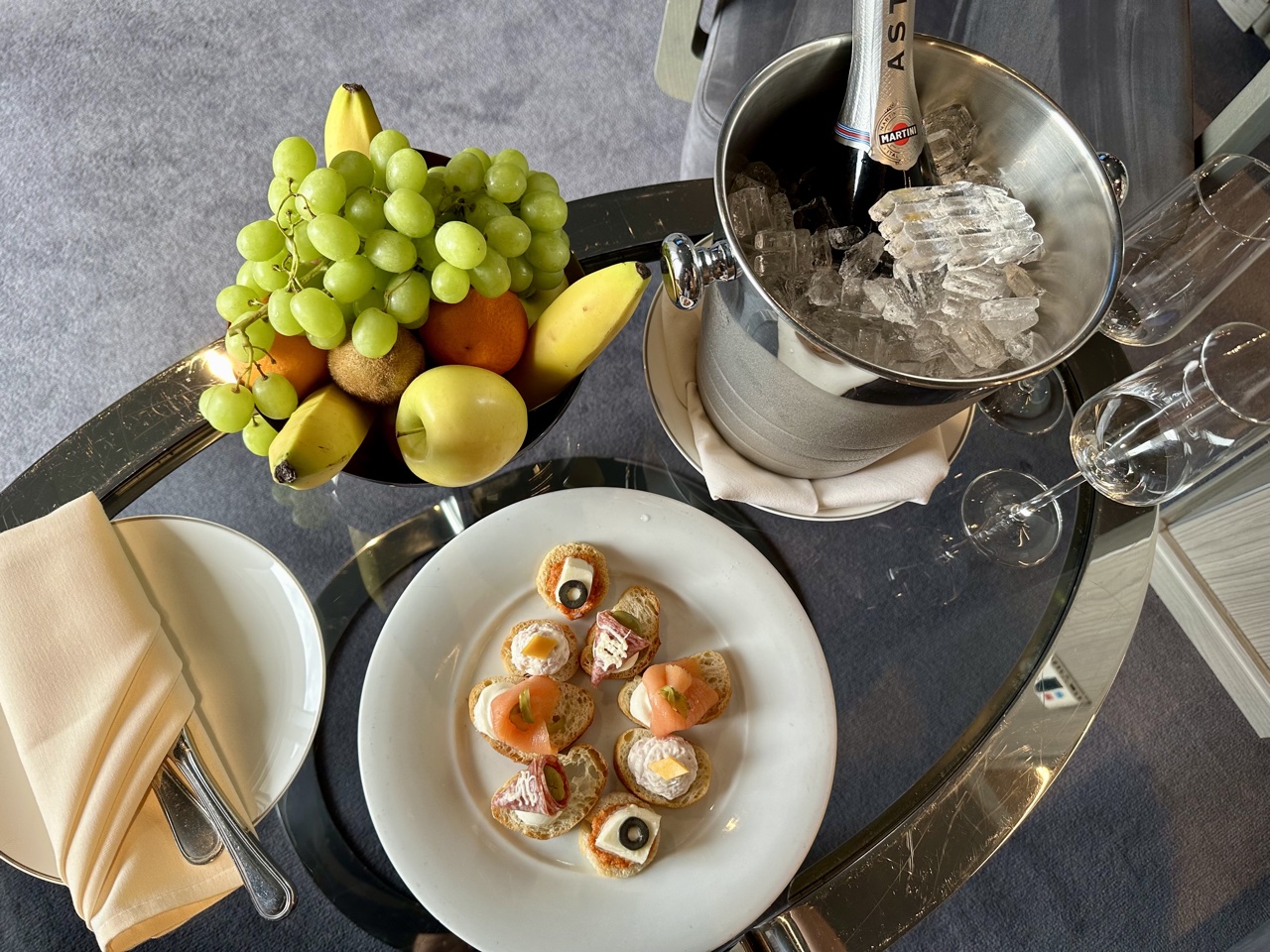

Privacy
As business class with an airline, ship within a ship has a separate experience when it comes to accommodations and access areas. Most products have a wristband or keycard restricted area only available to those booked in the ship within a ship. Using MSC’s Yacht Club as an example, this separate section of the ship occupies the forward portion of three decks and is behind access-restricted glass doors.
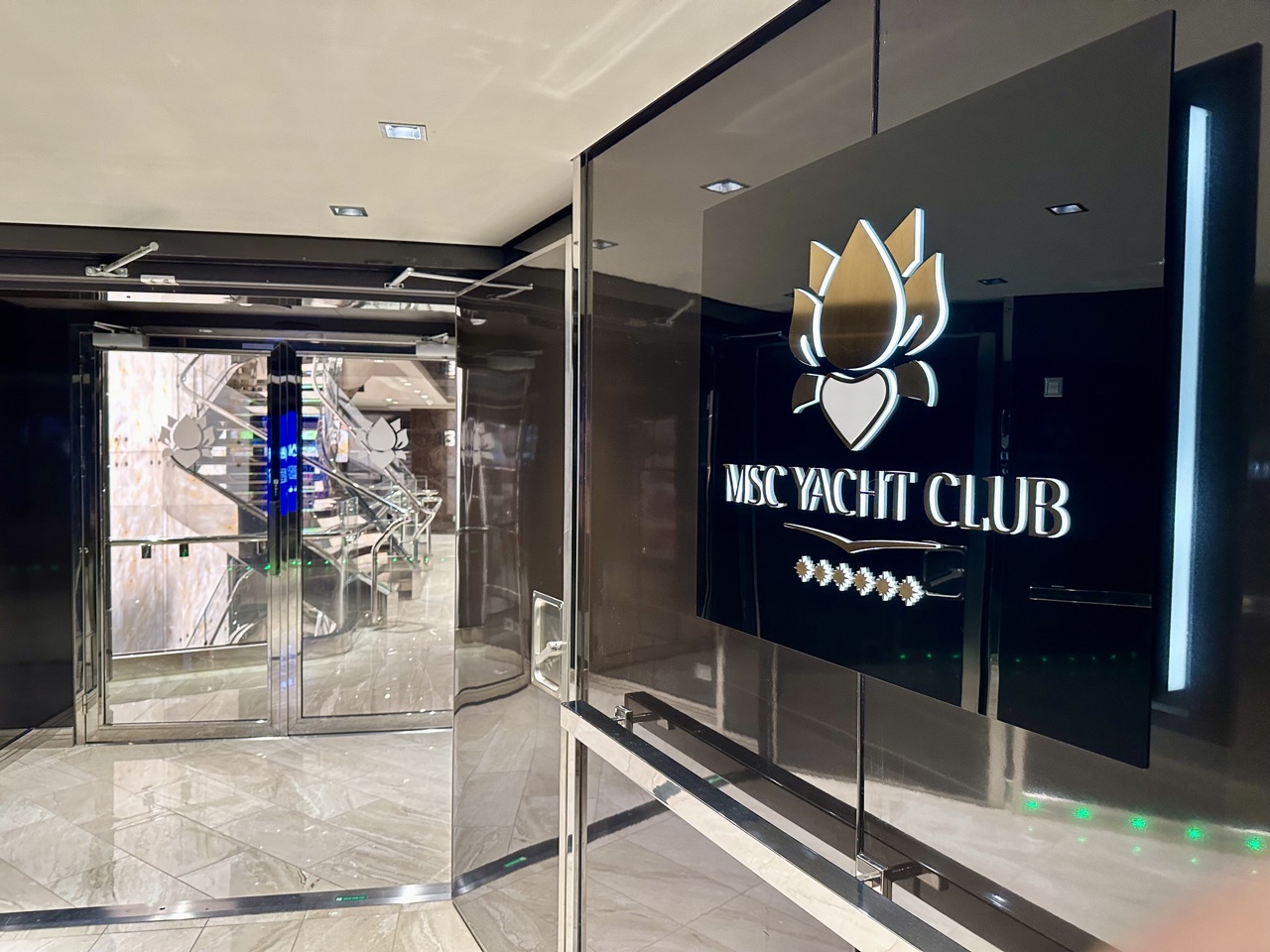
Inside the restricted access area, a concierge team is ready to assist guests, a private lounge, private pool, hot tubs, sun decks, and restaurant. This is not unlike a giant United Polaris lounge only available to ship within a ship guests. The food and menus are of a higher caliber than on the rest of the ship as one might expect, service ratios are better, bar service includes more high-end products, and a luxury standard is deployed everywhere.
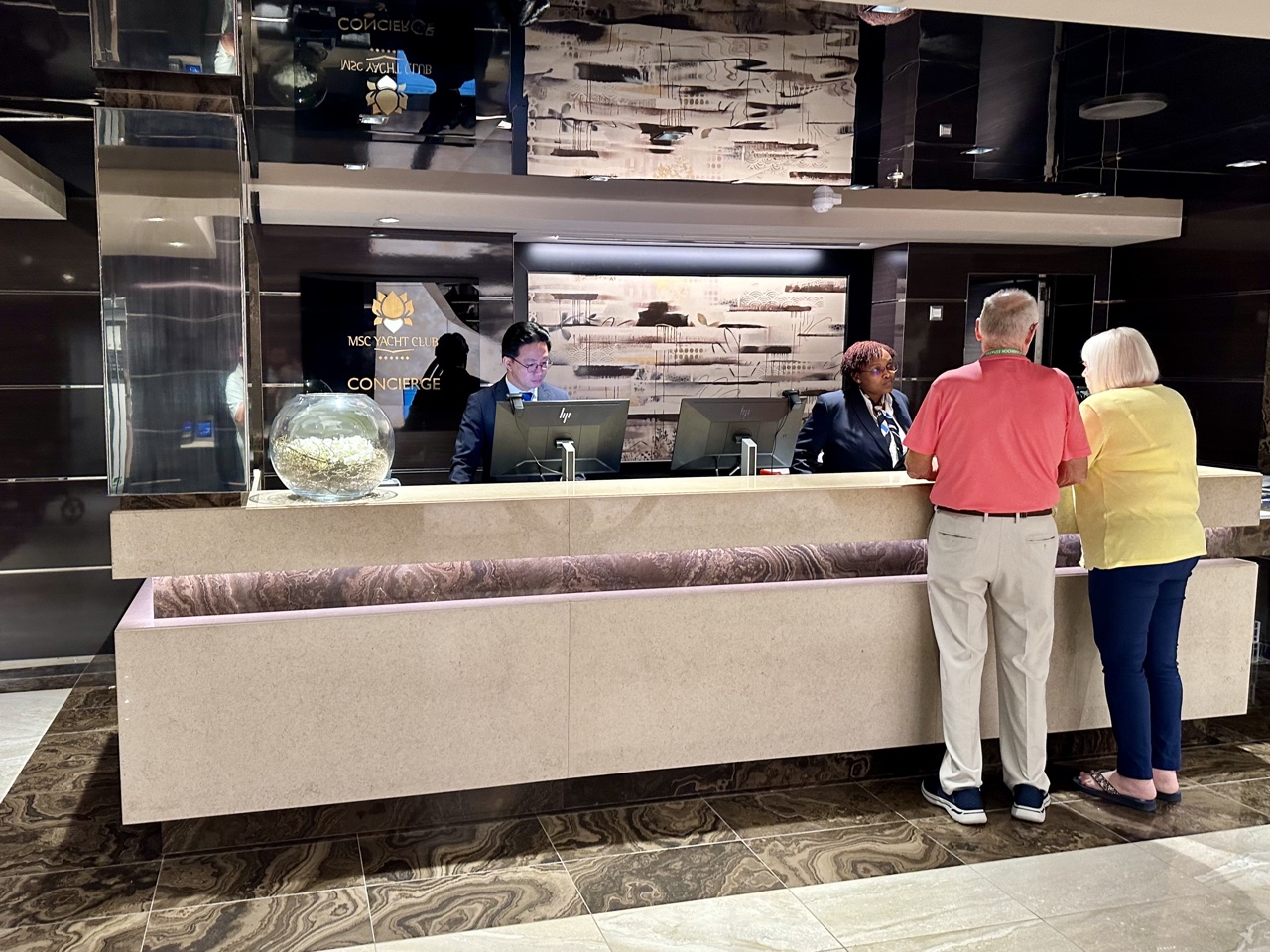
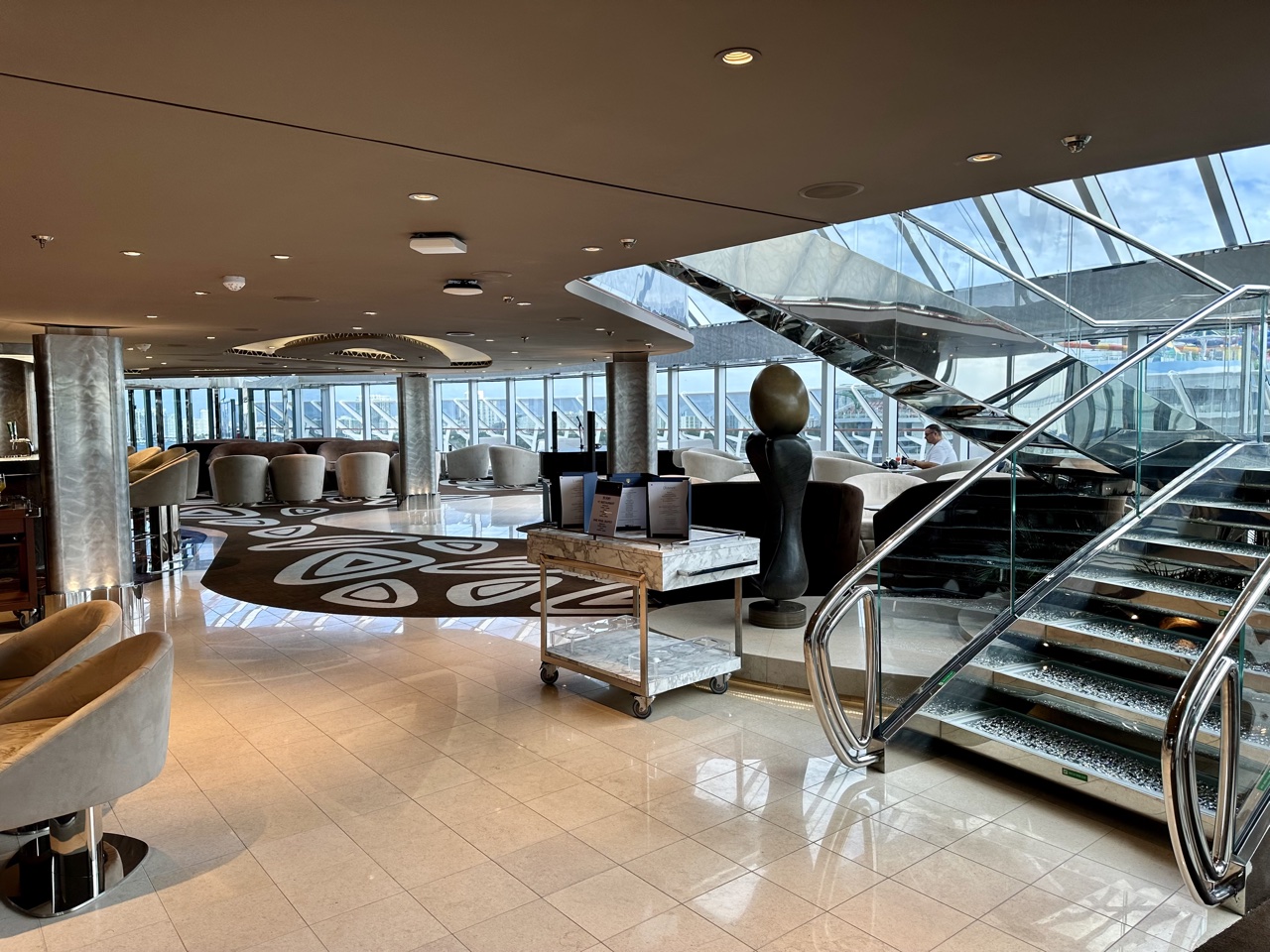
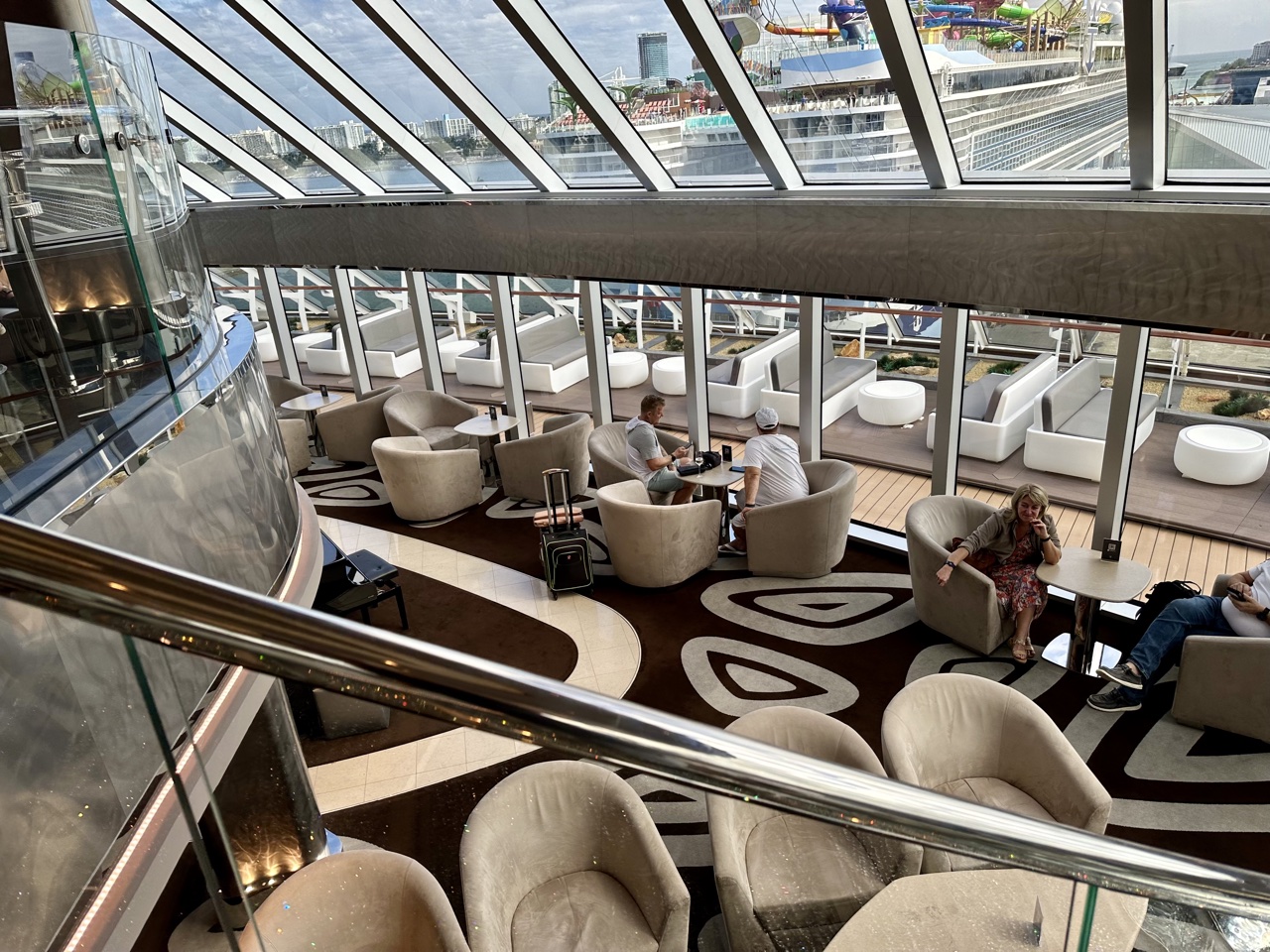
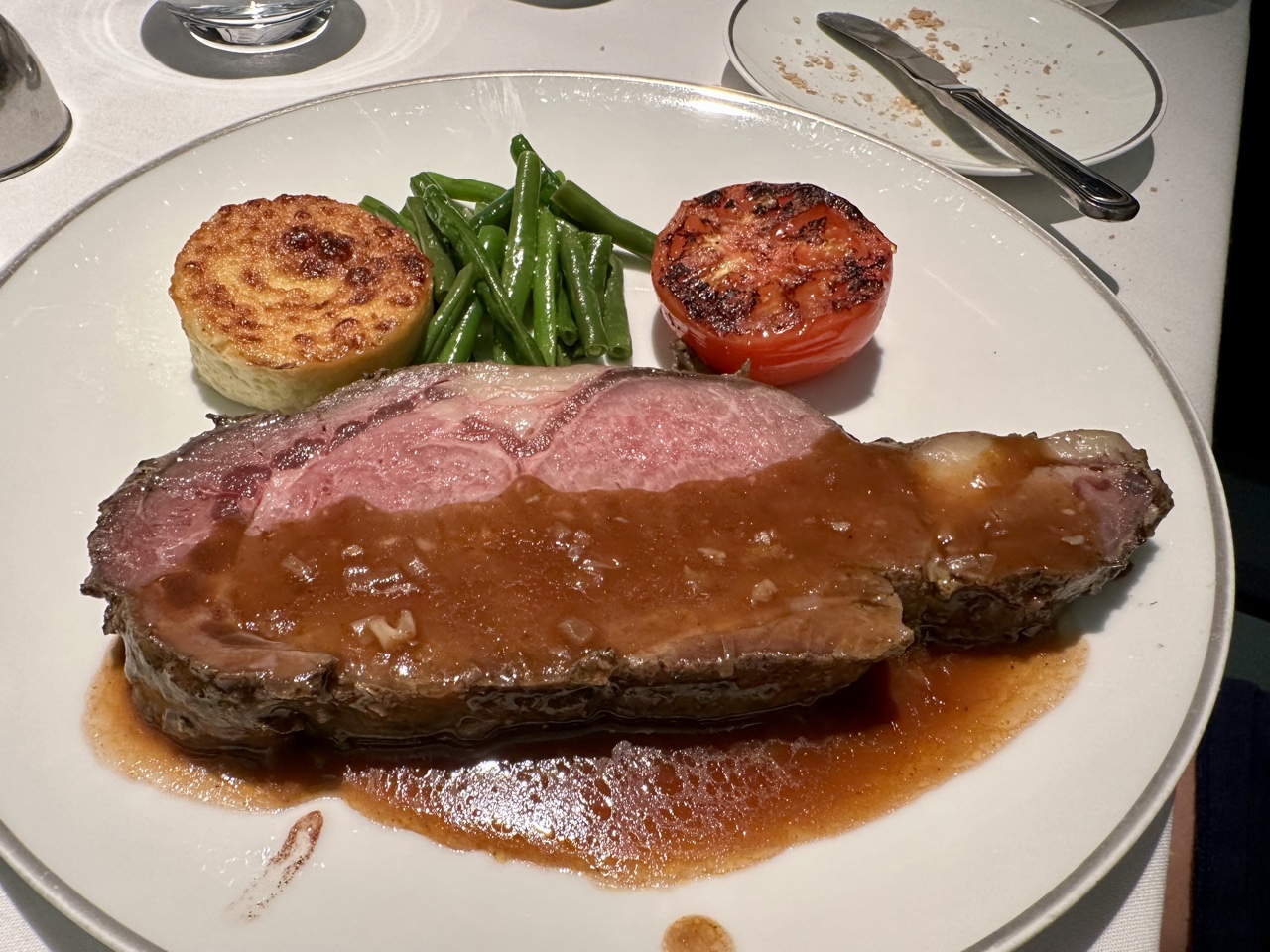


The pools are also a massive contrast from the rest of the ship. In the opening photo I shared the spread of humanity that exists on large ships. Again, like coach compared to business class, the rules and turnout are different in a ship within a ship product. During a weeklong voyage, we never saw more than three people in this pool at once.
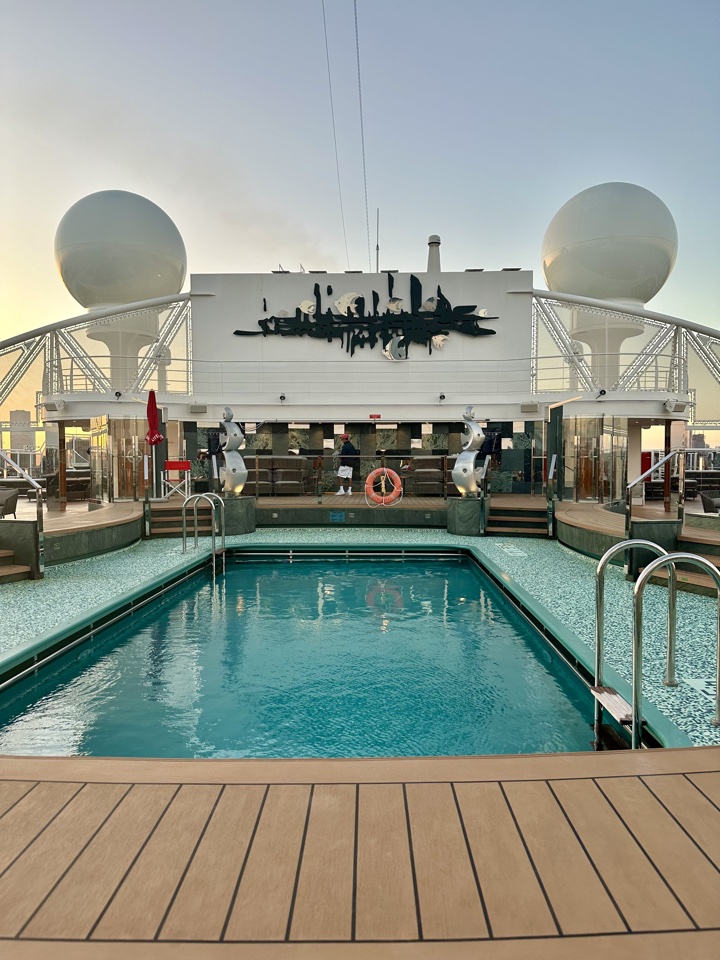
Ship within a ship passengers might also have access to the spa without an additional cost. In MSC’s Aurea Spa, it includes a salt room, a five-stage progressive rejuvenation shower that coordinates its lights, sound, temperature, and pressure, a sauna, a snow room, and more rooms for which I couldn’t even identify their purpose.
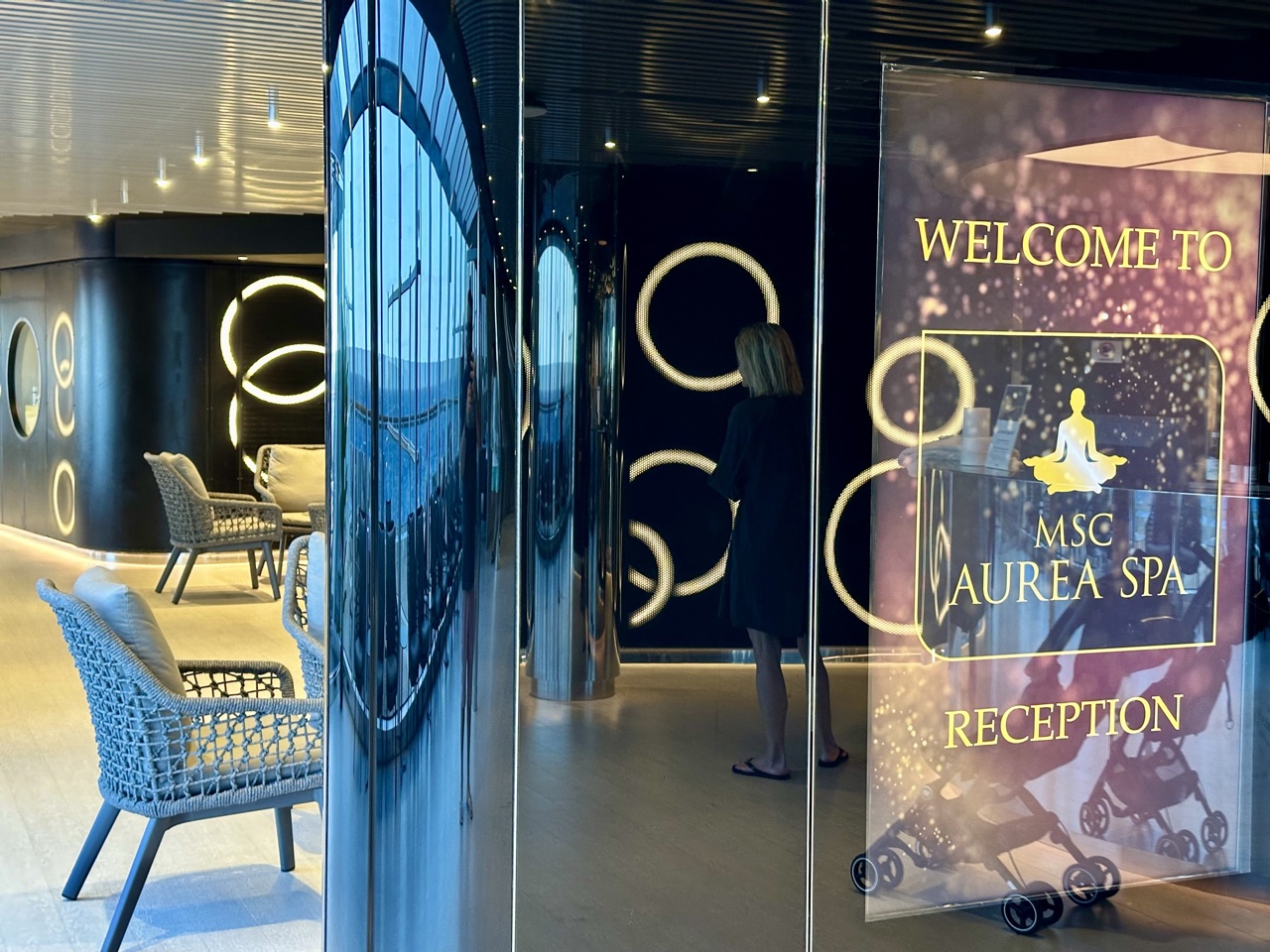
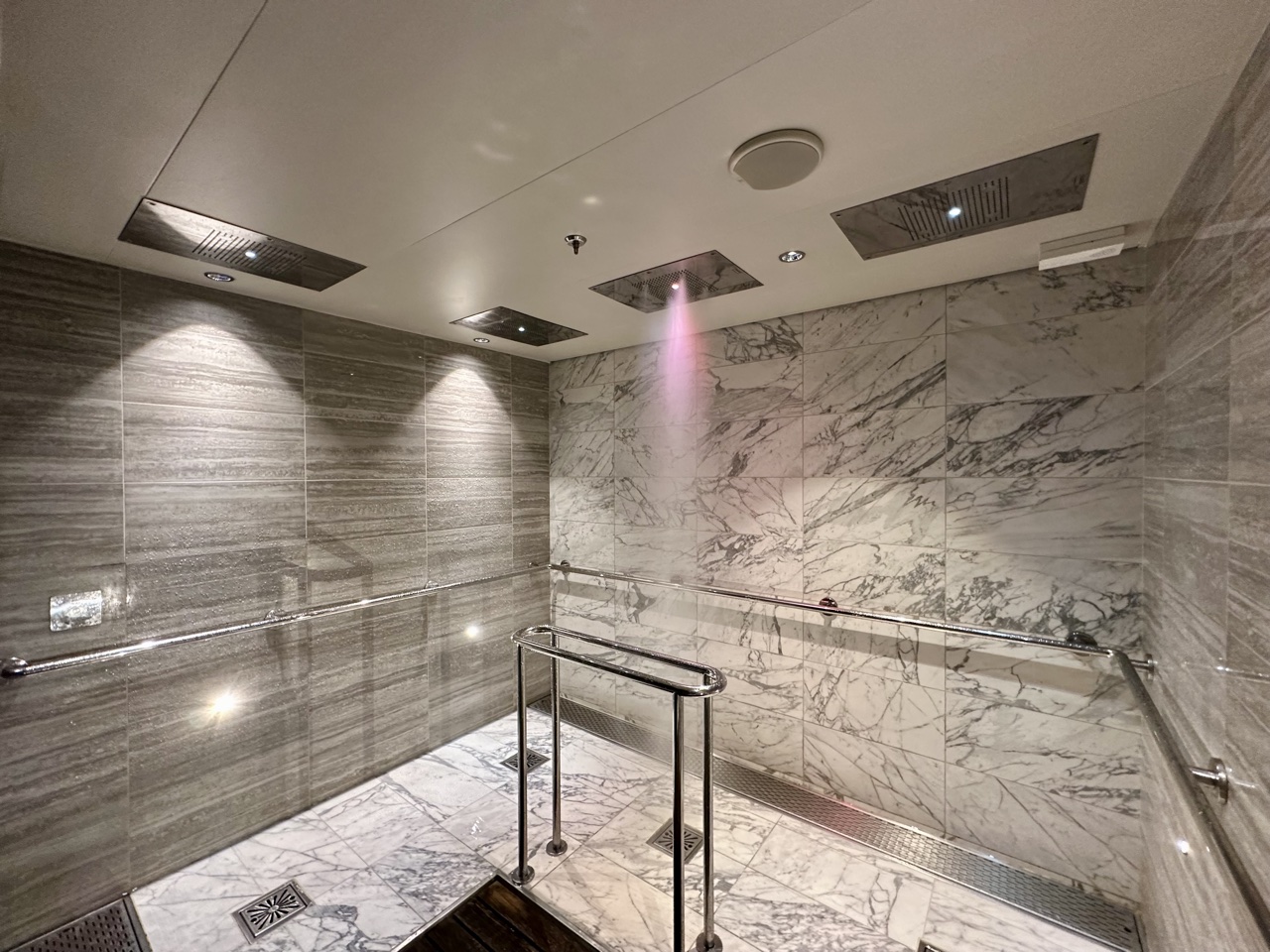

Ship within a ship customers will also extend their experience if the cruise line has its own island in the Bahamas (as most do.) Rather than schlep to one of the beaches, pay for deluxe food over hot dogs and hamburgers on the grill, premium customers are escorted by separate priority golf carts to private beaches with their own premium on-island restaurant unavailable to other guests even for a cost.
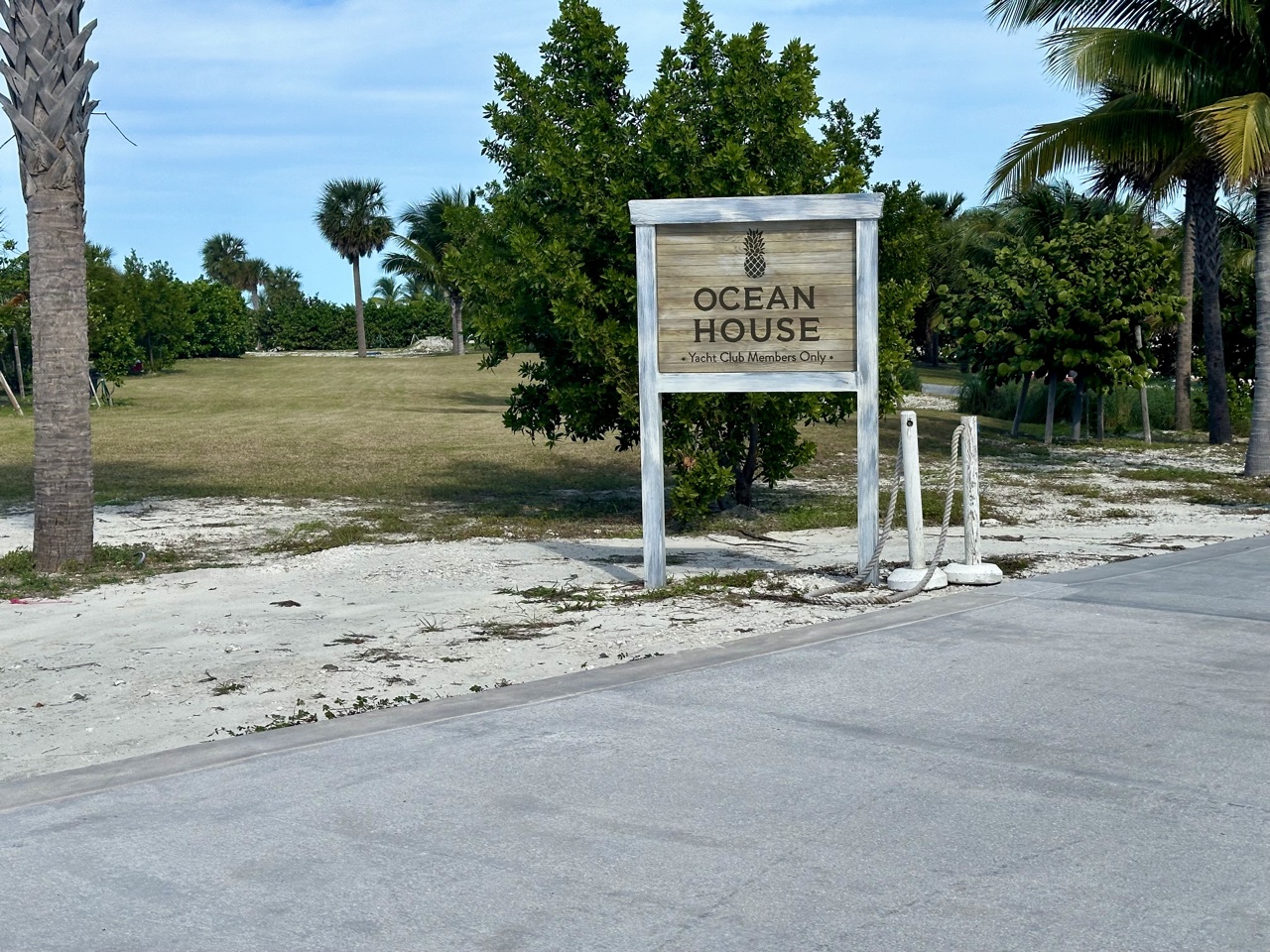
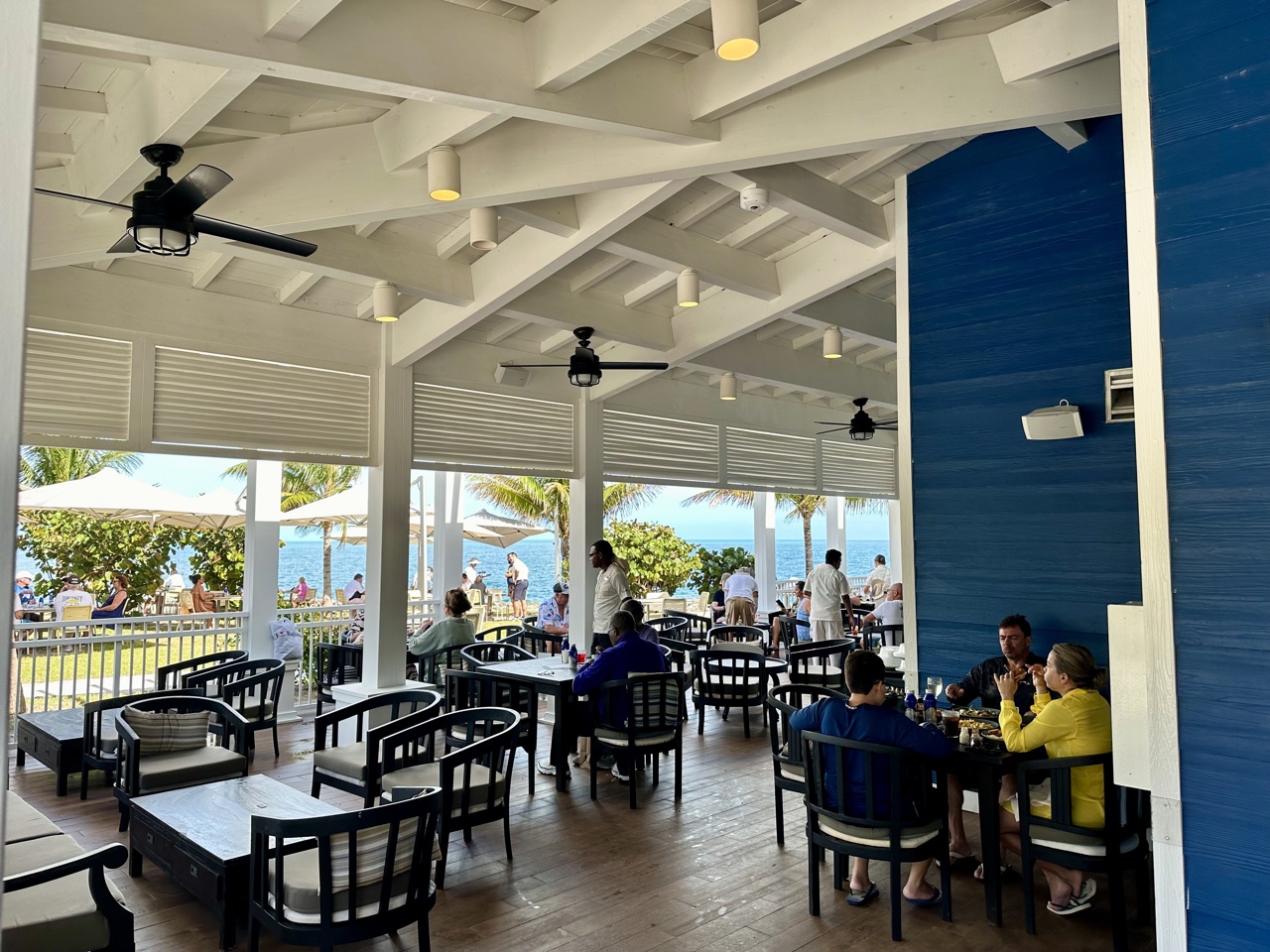

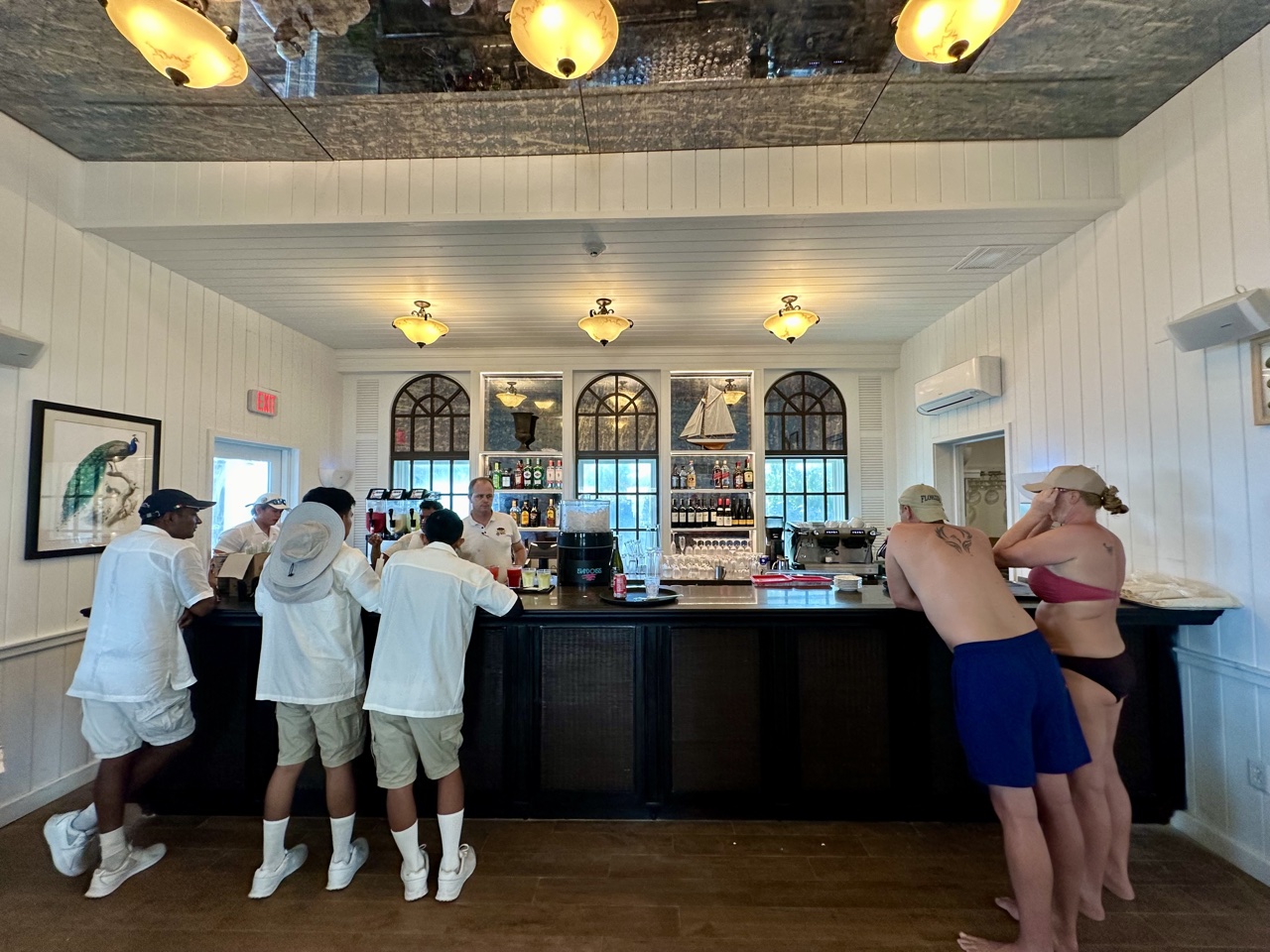

Towels, chairs, and umbrellas are provided by butler staff on the beach, though cabanas and other specialty services like a massage may incur a charge.
Butler Service
Butler service is something of a question more than an answer – what can you ask of your butler? At a premium hotel with butler service, they might run a bath, press your clothes, or work with staff to arrange a special meal or room service.
Onboard a ship within a ship product, butlers take it a step further. They make reservations at specialty restaurants, ensure everything needed in your suite is there, perform specialty personal services, and make arrangements on your behalf. But as the ship lives within a larger ship for which passengers may need to access, your butler will escort you.
For example, if you book the specialty restaurants located outside of the confines of ship within a ship, your butler might not just make you reservations, but also escort you to dinner or even shopping around the ship.
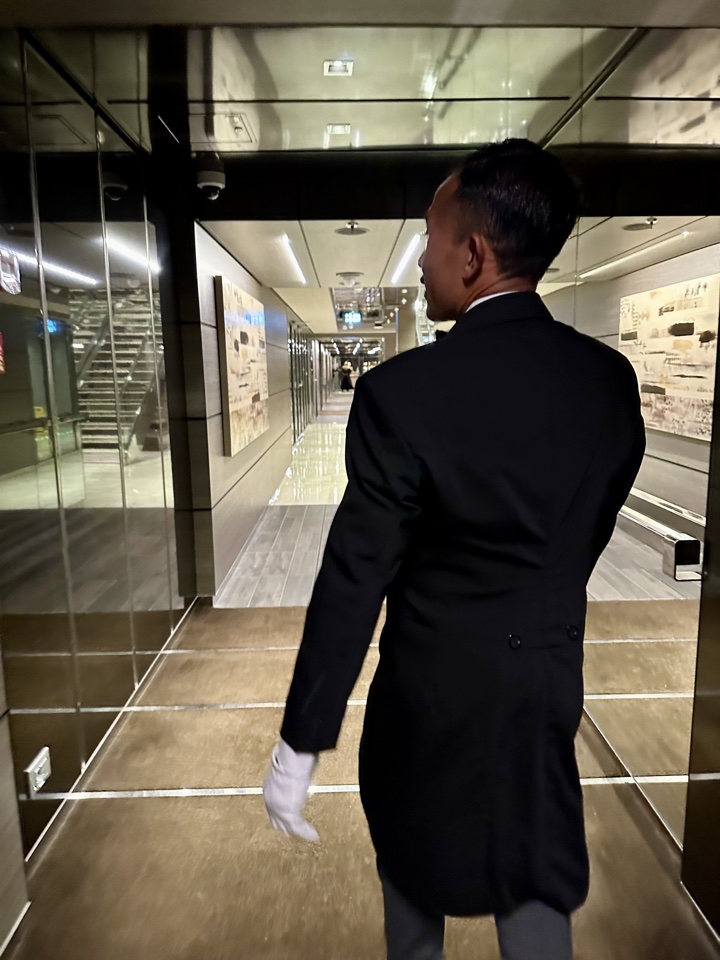
In fact, upon arrival into port, a Butler might walk you past all of the lines to collect luggage and reach customs embarrassing as that might be at the time.
Even first class with Emirates doesn’t involve a staff member escorting you through the Duty-Free shops.
Comparable Coach to Business Buy Price Differential
Considering what coach costs to fly vs business class, how does a ship within a ship berth cost compare to a standard cabin? The answer is about the same. A ship within a ship runs about $2,000-4,000 for a week in the Caribbean depending on the cruise line and the amenities while a standard room typically runs between $400-1,000 before extras.
When considering the additional ways in which ship within a ship can make premium passengers feel special and differentiate the experience, it may actually add more value. Instead of two better meals for a standard long-haul flight, it’s three upgraded meals a day plus snacks, plus unlimited room service. Most add fast wifi (usually two devices) for the duration of the journey as well, something almost no airline offers and certainly not at broadband speeds.
Conclusion
I certainly wasn’t aware until recently that beyond simply better rooms and suites, an entirely different class of service is offered for cruise lines comparable to long-haul business class on an airline. In many ways, ship within a ship is superior to business class but mostly in the nature of the offering and the duration of the journey. Mainstream cruises get a bad wrap and some of it is earned, and some of it is not. But just like a Basic Economy seat on a long-haul flight should not be equated with the airline nor with the entire mode of transportation, business class or first class in either environment can be the difference between a great experience and one you might not want to ever repeat.
What do you think? Were you aware of this elevated level of service?




Yes, my parents just got this at a MSC cruise. They said it was well worth it.
Perhaps an unpopular take, but I’ve never understood the appeal of a cruise. You’re sort of just stuck there as a captive audience member…personally would much rather have the flexibility of a “typical” vacation.
It depends. Older people love cruises because it is basically a single check in and check out at a hotel that will take you to several different destinations. If you get a top cruise ship, there is service similar to a first class with amazing food made by chefs, great beverages, entertainment, shows, casino, theaters, etc… For older people, it is a much easier way to travel. They can also decide if they want to do tours at different places and they are all tailored for their needs.
The appeal of a cruise is you see multiple destinations in one trip that are not possible or practical to do via a land tour. It’s easy to tour Italy or tour Italy and France but a cruise allows you to visit Istanbul, Ephesus, Santorini, Rome, and Barcelona all on one voyage. It’s a cost effective way to tour history. Some places have impressive architectural sites but don’t warrant a long stay. Athens is an example of this for me. Seeing the Parthenon on the Acropolis is incredible but there is not that much to see in Athens beyond it.
Cruises also allow some safety in certain areas. You can see Rio De Janeiro and São Paulo on the safety of a cruise tour without having to fly to Brazil by going from Buenos Aires.
Sometimes less is more
Consider a luxury cruise line instead of a mass market cruise line. The prices that you are quoting are typical for a line like Seabourn and in my opinion, the difference is even more stark. There are times when you will run “larger ship” problems even on a “ship within a ship” cruise. Upside / downside – on a luxury cruise line: upside, all of the restaurants will be as good as or better than the upgrade restaurants on a larger ship; downside, there won’t be as many choice and you’ll need to shop for specialty things. For example on Seabourn, the 600 person ships will have a Sushi restaurant. On the older ships, that won’t exist. The standard rooms will be as nice or nicer than the “ship within a ship” rooms on a mass market cruise.
Not all mass-market “ship within a ship” experiences are the same. For example, on MSC Ocean Cay there is a private beach, private restaurant, and such on that island for Yacht Club patrons while on Coco Cay there is no such private area (they removed it) for RCCL elite guests but there is at Labadie. Also, some cruise lines will allow other passengers into the private areas for a fee or at certain times of day. For example, RCCL and Carnival will sell day passes to the private pool areas and Carnival allows all guests into the private bar area during the day so it’s no longer limited to those upscale “suites” guests.
Anyone running the 3 cabin first class equivalent via a ship within a ship concept?
NCL has the Haven
Rap, not wrap.
I’d say this is more akin to first class than business class